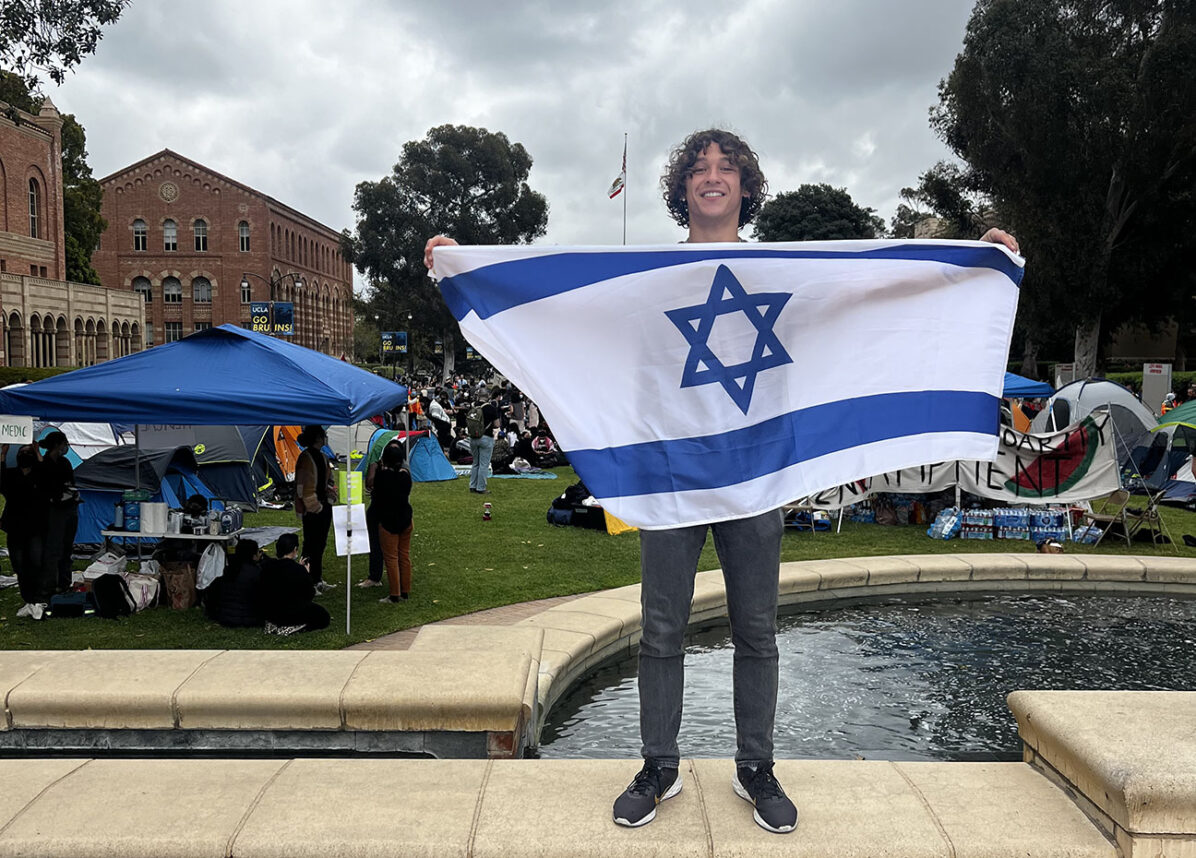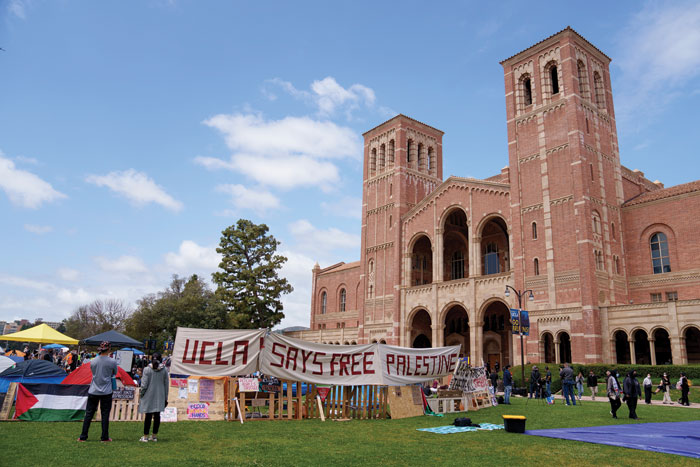Rabbi Freundel's detailed analysis of the halakhic basis for Partnership Minyanim demonstrates an impressive mastery of the relevant texts. But, in assessing this new practice, it is important to examine not only the halakhic responsa but also some of the underlying assumptions about women, men, and the formulation of law within the Orthodox community that are implied in his analysis.
One recurrent theme among those who contend that Partnership Minyanim is not supported by the halakha is that people like me who attend Partnership Minyanim and find them meaningful are ends-driven. That is to say, Partnership Minyanim supporters are thought to act solely on an emotional basis and to use halakha in service of their personal needs and desires, to satisfy ulterior motives. On a very simple level, I would invite anyone who questions the validity of Partnership Minyanim to attend one. After observing the delicate maneuvering around the mechitzah and careful attention to roles during the tefila, I would ask if they cannot recognize the effort to remain firmly connected to Orthodox practice. What kind of ulterior motive would someone have for the spending the same amount of time on Shabbat morning, saying the same tefillot, listening to a Dvar Torah with women doing select portions unless they felt themselves to be Orthodox?
But taking this one step further, it is untenable to assert that advocates of Partnership Minyanim are the only people who are argue their case with a hidden agenda in mind. Everyone comes with a context. Partnership Minyanim supporters are criticized for a failure to engage with the traditional Orthodox sources in an intellectually honest manner and their analyses are seen as an attempt to retrofit the law to their desires. However, I posit that the notion that one can distinguish between purely emotional and rational grounds for halakhic decision making is a straw man. Life is complex and both elements, in varying proportion, motivate religious people to ask questions about their practices and examine their interaction with halakha. The derogation of emotional or subjective factors in religious conduct can be destructive of genuine spiritual striving. It assumes that people’s emotional state can be reliably read and judged. Unfortunately, this presumption is more often made about women than men. Moreover, the contribution of non-legal factors and personal priorities is given much greater leeway in other areas of law that do not impact on the status of women. Witness the vigorous debate between different segments of the Orthodox community in Israel today about how to best observe shmita as evidence that how the Jewish jurisprudence assesses the corpus of law changes dramatically depending on context and personal preferences. All sorts of factors have been brought into play including the viability of Israeli agriculture in a global market and enriching Arab farmers at the expense of Jewish farmers, environmental concerns, public education, and attitudes towards the performance of mitzvot. There are always meta-halakhic issues that are involved in decision making – consider the rabbinic imperative to do whatever is possible to avoid mamzerut. Halakha ideally represents a balance between intellectual clear headedness based on foundational principles and emotional responsiveness to each person and each circumstance. The best psak achieves this objective.
Second, I think the difference of opinion about whether Partnership Minyanim are consistent with an honest and rigorous reading of halakha is one that transcends the interpretation of any single or group of sources and responsa. I read Rabbi Sperber’s work as a legitimate validation of the practice of Partnership Minyanim and opponents of Partnership Minyanim reject his opinion. Perhaps, supporters of Partnership need to press the case more articulately and frame the case in a more compelling manner. But this will not eliminate the conflict. People can and do argue about the nuance of legal opinions in every society and halakha is no different. I propose that there is a larger divergence in the approach used to read sources – static and timeless versus dynamic and contextual. Contextualizing the law does not by its nature render the decision Conservative but is just as much a part of Orthodox jurisprudence. This is not unique to Jewish law and plays out in current arguments about the US Constitution, between those who favor interpretation based on original intent of the framers versus those who favor its application as a “living” document. Suffice it say that, again, I think the situation regarding the halakha is complicated. On occasion, the law is relatively fixed and unyielding. But there is ample documentation of rabbis who, in the face of opposition to change of any kind, have addressed divisive issues in innovative ways. This includes the permissibility of economic interactions with Christians and the heter mechira at the time of the early resettlement of Palestine in the late 19th century. There will be those like Rabbi Sperber who will view the desire for Partnership Minyanim as an authentic religious goal and strive to create a space within the halakha for it. In contrast, there will there be others condemn it as “chadash.”
But that brings me to my third point. I am struck by the overwhelming demand for uniformity of practice that is required by those who oppose Partnership Minyanim and who consider supporters of Partnership Minyanim to fall outside the pale of Orthodoxy. Take a different example. I suspect there is quite a divergence in practice on the second day of Yom Tov among Americans who go to Israel for holidays. Some do not observe the second day at all, some do not observe the second half of day, some distinguish between public and private activity, some are lenient with positive versus negative commandments, and on and on. Ignoring whether they are adhering to the position of their local rabbi or an available source from the Web that supports their preference, I am unaware of anyone describing any of these patterns of observance as un-Orthodox or asserting that they threaten the fabric of Orthodoxy. Is it unreasonable to ask for the same level of tolerance, and I use that word explicitly, towards those who attend Partnership Minyanim?
Finally, with regard to the view of women and men that would prohibit participation in Partnership Minyanim, I think it is worth stating clearly that there are laws that have provoked profound moral debate over the millennia. The command to annihilate Amalek is one. In 1904, Rabbi Avraham HaCohen Kook responded to a question about the status of black people (Letter #89). He asserted that, in fact, maintaining blacks in a state of servitude is for their betterment because that condition is their essential nature and is hard wired into things. The Rav taught that the status of women is cosmically fixed and determined. I will simply say that these are hard positions for some modern people to accept and that failure to embrace them does not disqualify someone as an Orthodox Jew in 2013.
In closing, as a doctor, I realize that medicine and religion are two very different activities. But, there is much that one can teach the other. In this age of blogs, social networks, and instant communication, there is much available information and people feel empowered to make decisions for themselves. Specialists in all fields may bemoan this development. Doctors are no different and many dread the patient who comes to a visit armed with ammunition from the Internet. But, in medicine, this has lead to the realization that doctors are not the end all and be all in health care. There is a growing recognition that patients’ experience of illness is a critical component in the evaluation and treatment of disease. Failure to acknowledge the patient’s perspective can cause even the best laid medical plans to fail. Why should this be? Doctors spend many years learning their craft and why wouldn’t patients simply follow the advice and prescriptions of doctors? The obvious answer is that every patient comes with a story and their disease unfolds over time in a rich context of family, friends, community and work. The wise doctor knows he/she better pay attention for the patient to have the best chance of getting better. I would ask Rabbis to listen to congregants, whatever minyan they go to.
Chaim Trachtman






















 More news and opinions than at a Shabbat dinner, right in your inbox.
More news and opinions than at a Shabbat dinner, right in your inbox.